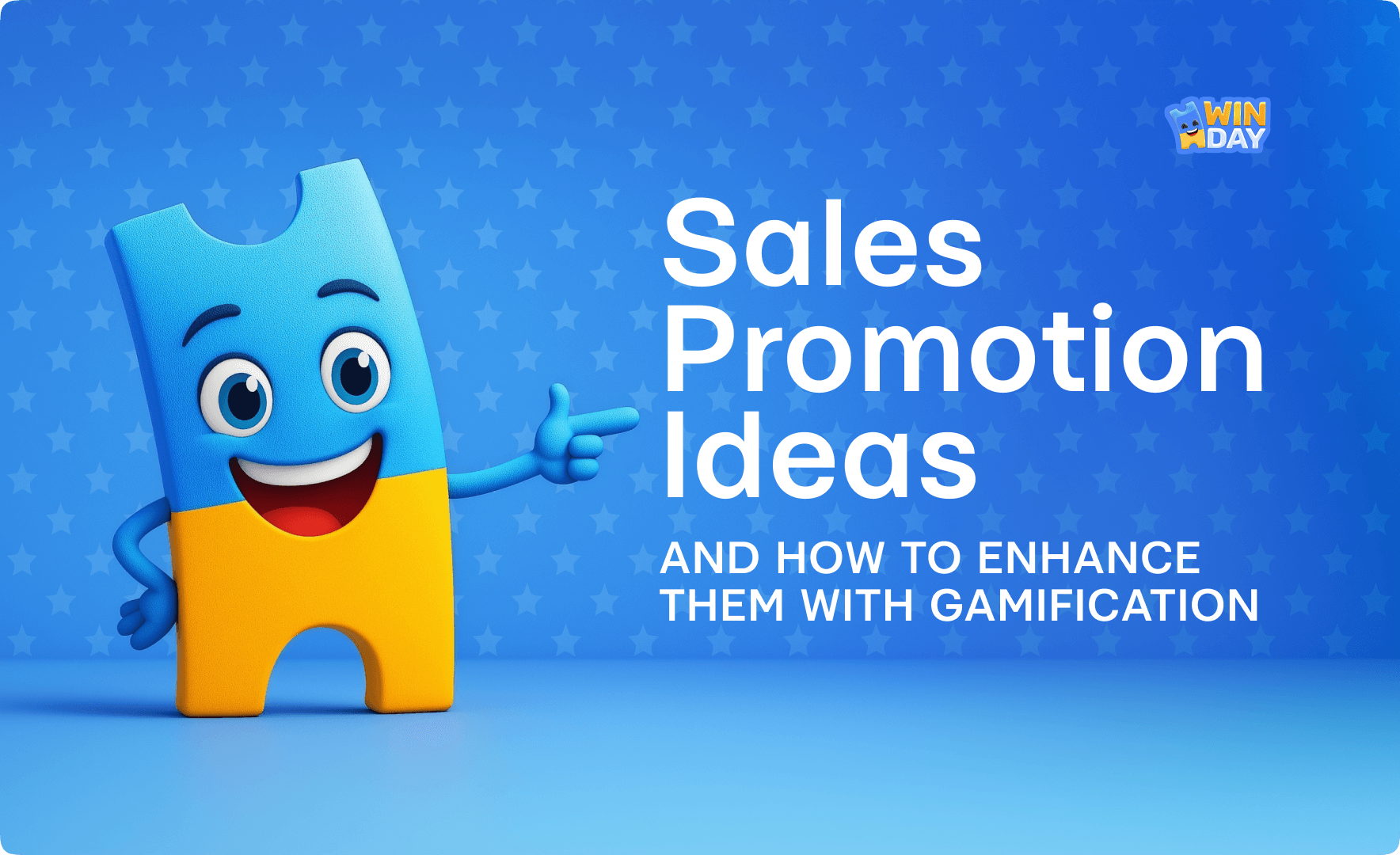How McDonald’s Uses Gamification in Marketing (How You Can Too with Winday)
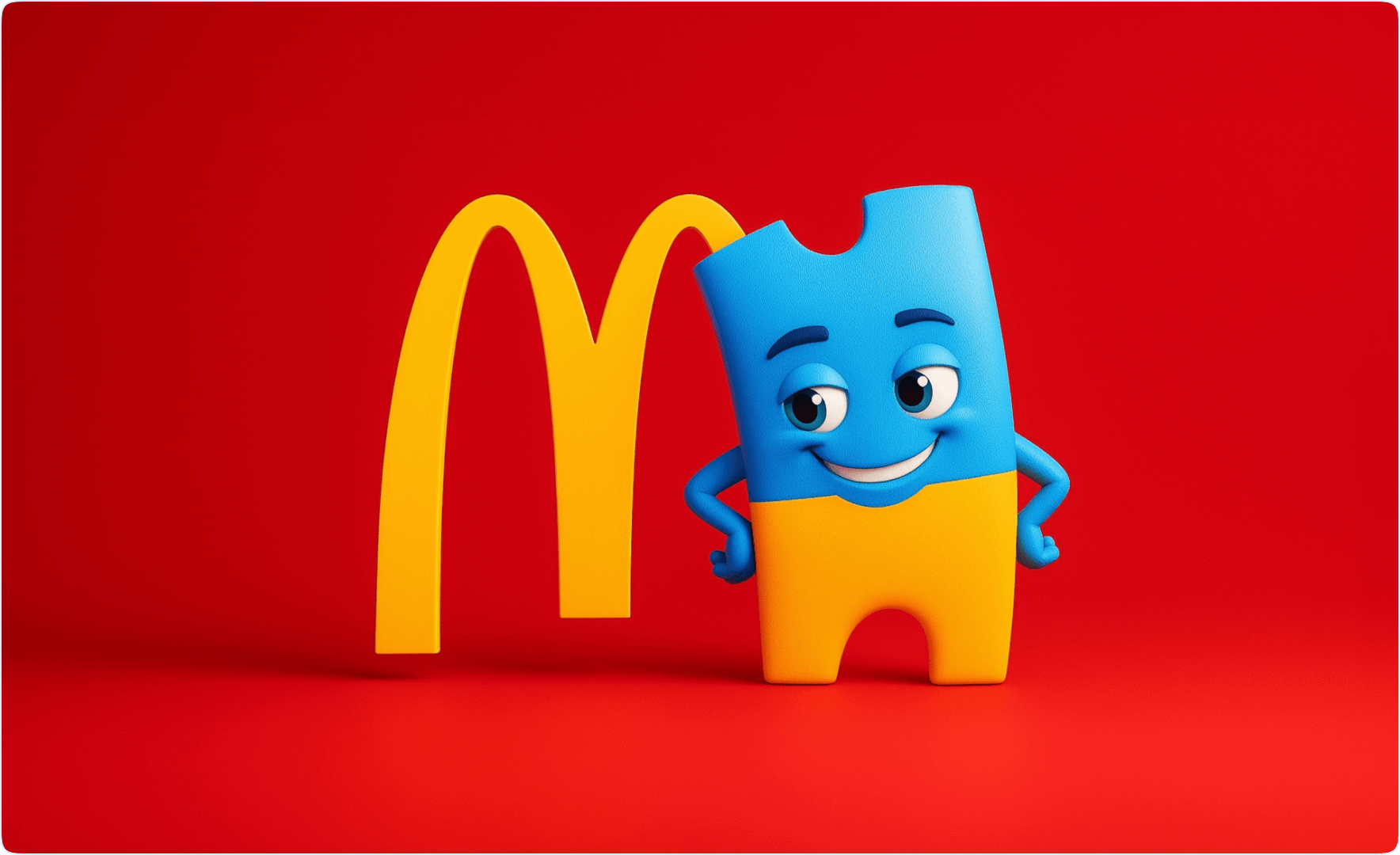
A new iPhone. Free fries. A shot at $100,000.
If you are a frequent customer of McDonald’s, you probably recognize that these are prizes from their Monopoly campaign. It’s without doubt one of the most successful and iconic examples of gamified marketing at a global scale.
McDonald’s success is not an accident, nor is it merely a byproduct of its production. They have built it on engaging mechanics: points, stamps, digital mini-games, and app-based loyalty. And it may look like an impossible thing to repeat, but actually, it is quite the opposite.
Winday makes these same techniques accessible to businesses of any size: from SMBs to enterprises. There’s no need for development teams or technical knowledge to create and launch gamified campaigns. All you need for implementing gaming elements is on Winday marketing gamification platform already.
In this article, we’ll explore:
- How McDonald’s monopoly campaign shows gamification as a tool for fueling real-world brand engagement, app usage, and sales uplift.
- Strategic game mechanics (stamp collecting, tiered rewards, and shareable achievements) that keep customers hooked.
- Why all these tactics are no longer exclusive to global brands, and how you can create similar gamified promotions with Winday’s no-code platform.
- How gamification impacts KPIs, how to design your own campaign, and how to avoid common pitfalls.
McDonald’s Gamification as Marketing Strategy
The McDonald’s Monopoly campaign is perhaps the most recognizable example of gamification in fast food. For the first time, launched in the late 1980s, it changed a simple meal into an interactive game by borrowing the familiar structure of the Monopoly board game.
McDonald’s Monopoly Campaign
Despite the fact that McDonald’s Monopoly game dates back decades, it still feels fresh today because of how it’s been continually updated to fit modern channels.
At its core, the campaign uses a “collect-and-win” structure. Customers receive game pieces with certain menu items. These pieces either offer instant wins or are part of a larger set. Complete a set, and you’re eligible for major prizes. These could include a wide range of things, such as vacations, cash, or free food for a year.
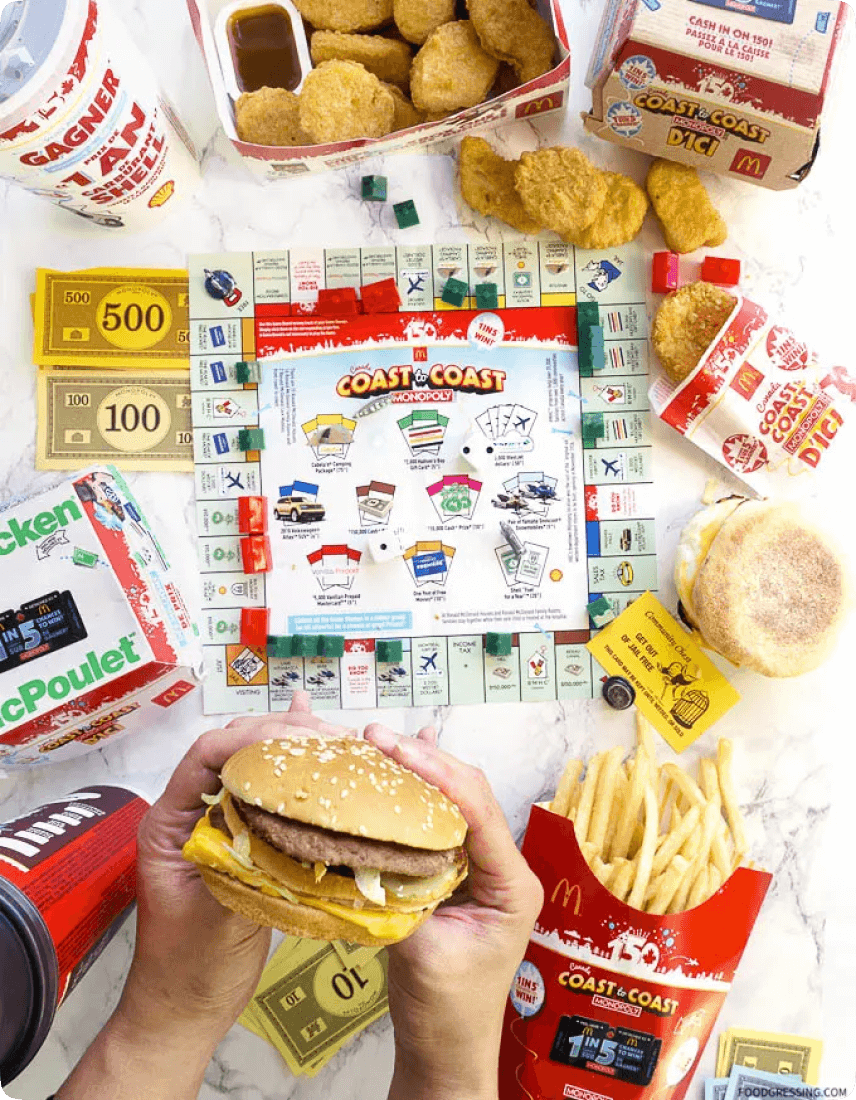
The McDonald’s monopoly game that was running in Canada in 2024. The customized game board features iconic Canadian elements.
Psychologically, what makes the campaign so effective? First, the rarity of certain pieces present in the campaign introduces scarcity. Randomness, on the other hand, introduces chance. And the visual format creates completion goals.
Interestingly, many customers easily collected common pieces, but one rare piece would complete the set. And that final missing piece became the obsession.
Over time, McDonald’s evolved this analog experience into a hybrid one. They added QR codes to physical stickers, which led to digital game boards inside the McDonald’s app. Obviously, with such a digital transition, they can now do a lot of things. For example, track participation offers more interesting things as a part of a gamified experience and extends the game through push notifications. This shift played a big role in scaling customer engagement McDonald’s built through physical and digital touch-points.
Of course, high-value prizes (vacations or even cash) pulled in attention. But it is not these grand things that make people come back. Instant wins, like a free drink or fries, Buy 1 Get 1 at 50% off were the main magnets for customers. Note, the mix of grand prizes and easy wins led to noticeable sales lifts during campaign periods. In fact, past Monopoly campaigns have been credited with increasing McDonald’s sales by around 5–6% over the duration of the promotion. That’s a serious bump for a brand already dominating the market.
Moreover, besides the spike in revenue, the Monopoly campaign delivered long-term brand impact. Customers look forward to it every year. Essentially, they walk into stores or the app, not for the food, or not only for the food, but for the game. The repetition, the collectibility, and the anticipation all worked together to make McDonald’s marketing feel more like a game than an ad.
In 2013, McDonald’s said its third-quarter profit rose by 5%, thanks to the Monopoly game.
The company earned $1.52 billion during the quarter, up from $1.46 billion the year before.
💡 Did You Know?
McDonald’s monopoly campaign had 15 different names across various years and regions. For example, some of them were “Wiiiin!!!”, “V.I.P.”, “Power Peel”, and even “Millionaire Game”.
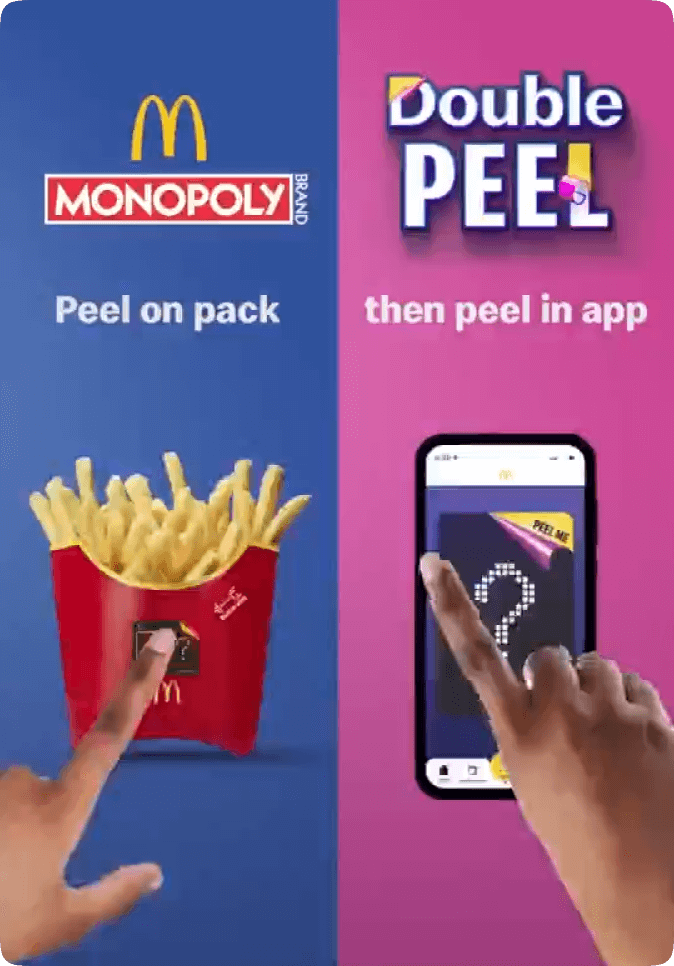
This exact kind of experience is now possible for any brand. With Winday’s no-code instant game tools, businesses can create digital “collect-and-win” promotions just like in McDonald’s loyalty program, without hiring a team of developers. You can publish games that replicate the core mechanics of Monopoly-style campaigns (collecting, unlocking, winning), and deploy them via link, QR code, or even directly inside emails. The same psychological triggers that powered McDonald’s gamified success can now power yours.
Later, McDonald’s made their Monopoly game more addictive by adding a second peel in the app. It worked big time: 4.2 million people joined in, playing 77 million times and pushing digital engagement up by 191%.
MyMcDonald’s Rewards
Another interesting example of McDonald’s gamification is found inside its app with the MyMcDonald’s Rewards program. Yes, gamification mechanics are not limited to a Monopoly program; McDonald’s uses them widely.
In the Rewards Program (which is basically McDonald’s loyalty program), every purchase earns users points, and it is designed to give 100 points for every dollar spent. Customers can redeem them for free menu items. For example, for a free order of fries, you need to collect 1,500 points. What’s working here is a highly satisfying exchange of value. Plus, gaining a “capital” and later exchanging it for more goods is what people are coming for in McDonald’s rewards program.
The app encourages users to keep coming back through its gamified elements. There are classic gamification mechanics and elements we know well from games:
- Progress bars that show how close you are to your next reward.
- Tiered levels unlock better deals the more active you are.
- Limited-time bonuses (for example, double point days) nudge people to order just a little more often.
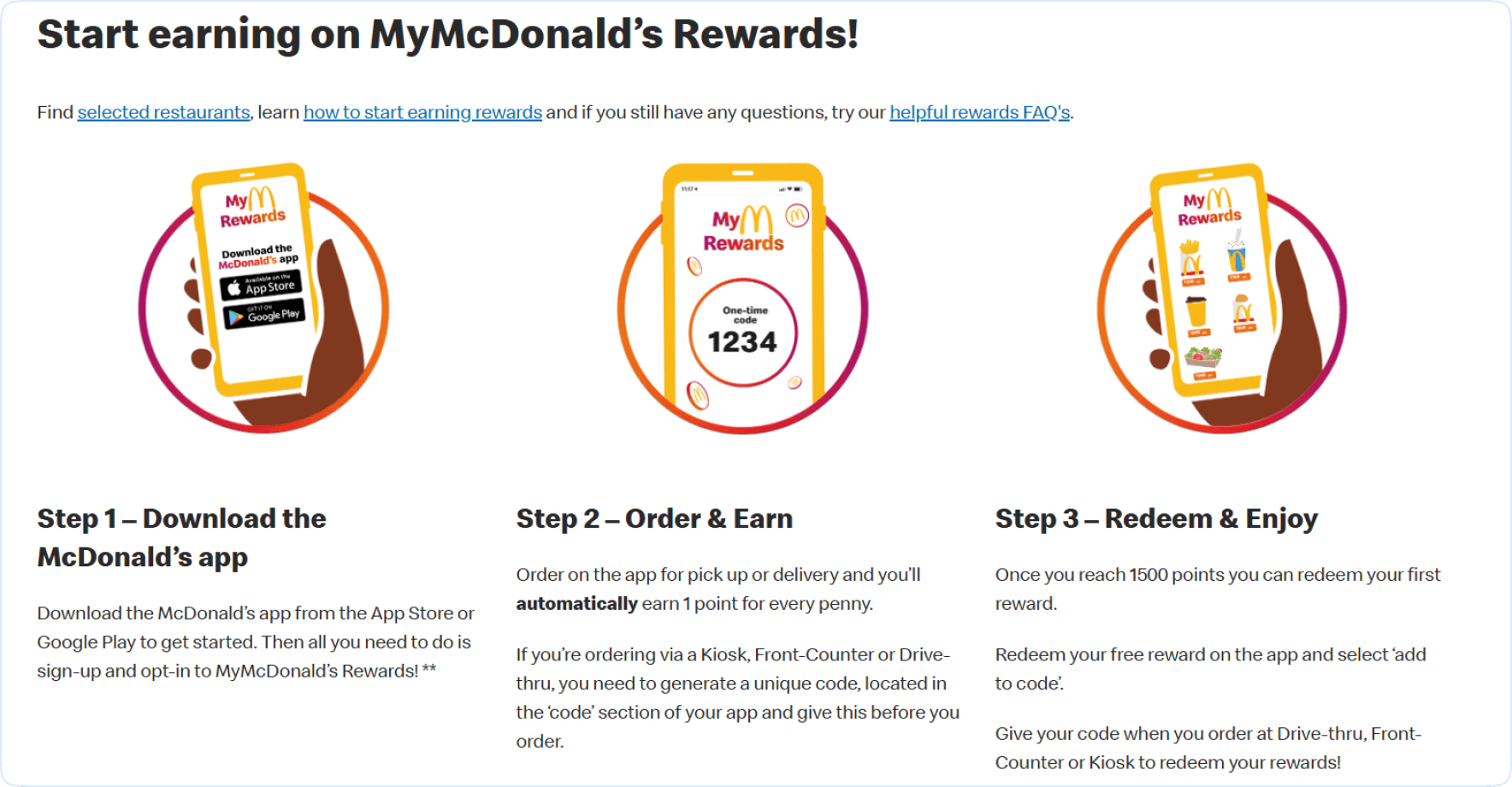
How McDonald’s gamification strategy looks through its rewards program.
🔝 Pro Tip:
If you’re running a gamified campaign, offer instant wins early on. Even a small prize like free shipping or $5 off creates emotional buy-in and motivates users to keep playing. People return for momentum.
Yes, points matter, but not as much as the experience of earning them. Gamification creates a very simple yet powerful habit loop: order, earn, progress, repeat. With time-sensitive offers and immediate feedback, customers get not only FOMO but also small dopamine hits. They feel like the app usage feels rewarding. That is why people check the app before lunch or open it when a push notification arrives with an interesting, often just beckoning offer.
From a marketing standpoint, the app becomes a direct channel to the customer. On the other hand, it is a goldmine of behavioral data. McDonald’s can see the most important things: who’s ordering what, when, and how often. All the information they get allows them to personalize offers and reinforce long-term customer engagement along with it.
Gamified loyalty gives a lot of rewards for the business itself. It shapes user behavior, deepens brand connection, and builds customer habits. All the things that McDonald’s marketing was aiming for. And Winday makes it possible to build the same systems in-house, without code, and, what is more important, without massive spend.
McDonald’s Mini-Games & Sweepstakes
Over the years, McDonald’s has leaned even more into short-term digital games and sweepstakes. Since bite-sized interactions are basically more than a trend now, it is smart to use them to keep the app alive and fun.
The mini-games McDonald’s implemented spin-to-win wheels, scratch-to-reveal cards, and interactive tap games. They are usually tied to holidays or promotional events.
One of the use cases of this McDonald’s marketing approach is driving app downloads and opt-ins. The logic is quite simple yet effective: you tie entry to specific actions. It could be installing the app, creating an account, or turning on notifications. This is how McDonald’s boosts its owned marketing channels, builds and continues to build a direct line to the customer. Such games are also powerful promotional tools during seasonal peaks. A Halloween-themed spin game might offer “scary” deals and free fries, while a Valentine’s tap-to-play challenge could offer customer gift cards or free desserts.
The rewards varied. Sometimes they were free menu items or BOGO discounts, but other times co-branded (Spotify subscriptions or movie tickets). But the key lies in consistency and novelty. Users can enter daily, and each day holds the chance for a little win. That encourages repeat behavior, and in turn, more frequent orders.
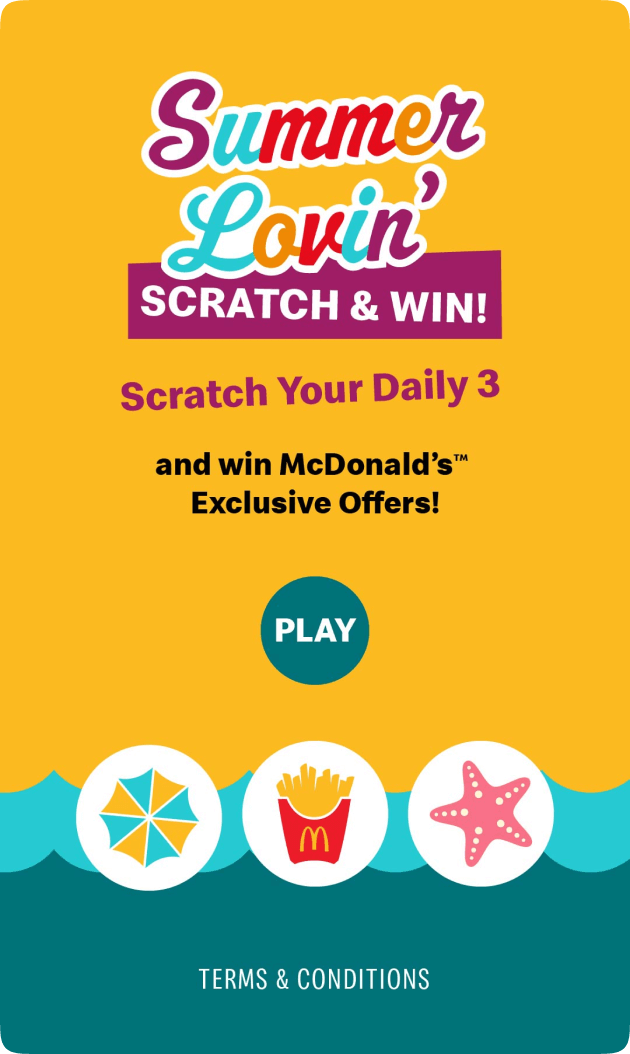
A seasonal “scratch & win” game, launched by McDonald’s.
From a behavioral lens, these games work because they mix two important things: surprise and anticipation. To put it simply, you don’t know what’s behind the scratch card or where the spin will land. And that mystery, that “what if”, is addictive in the best possible way.
Crucially, these experiences are designed to be shareable. Leaderboards, challenge invites, and limited-time tournaments are all of a competitive nature. People want to show off their wins and invite friends to join.
What Results Did McDonald’s Get from Gamification?
It may seem like McDonald’s used all the gamification tactics to boost engagement. And of course, it was a part of it, but in fact, they were building a long-term behavioral engine. A strategy has been designed to create repeat habits and a stronger emotional connection. Which, in turn, would drive measurable business outcomes in customer retention and bottom-line performance.
Enhanced Customer Loyalty and Engagement
McDonald’s gamified strategy uses a simple psychological principle: habit loops. Every time a customer interacts with the McDonald’s app, they’re reinforcing a behavior with a reward system. Now, how exactly do habits work? You just return to some activity every day. In the case of interactive marketing McDonald’s uses, you get to collect rewards or finish missions. Since people are checking their phones all the time, doing all kinds of things, there’s no reason they wouldn’t check the McDonald’s app too, especially when rewards are involved.
Use of personalized challenges (as well as levels) strengthens the emotional investment users make. Once users begin accumulating points or rewards, they’re unlikely to abandon the program. And slowly, the simple game mechanics evolve into an emotional journey.
In this way, loyalty becomes more than a transaction. McDonald’s digital marketing tactic basically uses a game-based progression to make users more emotionally invested. Just like in “MyMcDonald’s Rewards“, points and rewards create a reason to return frequently.
On the commercial side, the benefits are clear. More engagement means more orders, more data, and more refined targeting. Every swipe, spin, and tap gives McDonald’s insight into what customers want and how often they’re ready to come back for it. And that data helps fuel even smarter campaigns.
In 2024, McDonald’s shared that over 175 million people around the world were actively using its different loyalty programs, including McDonalds’ Rewards.
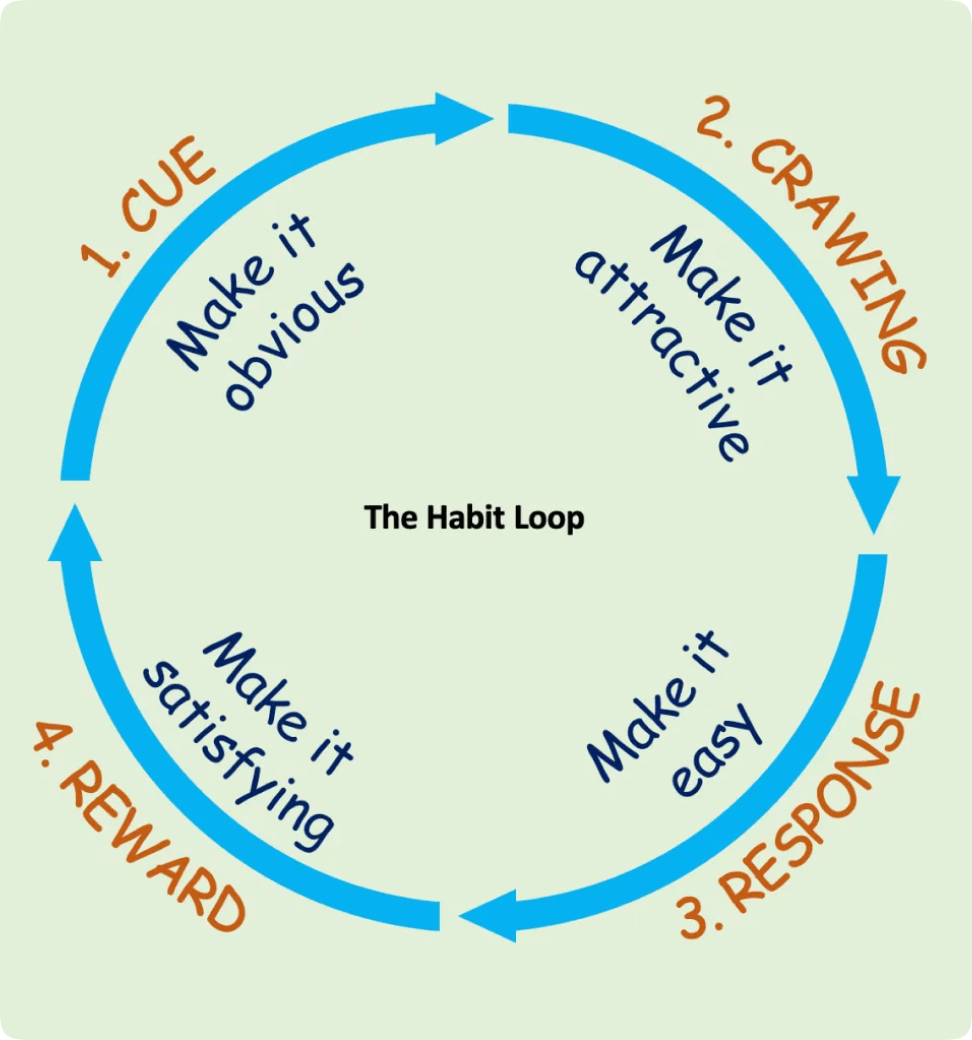
The Habit Loop, a psychological model that explains how habits are formed and maintained.
💡 Did You Know?
Progress bars and tiered systems, like the ones used in MyMcDonald’s Rewards, boost task completion rates by up to 85% when users can visually track their progress toward a goal.
Increased Visit Frequency, AOV, and Retention
If you think about it, each interactive marketing McDonald’s tool is designed to create repeat visits. Why? Because every game entry or chance to win requires a purchase. That creates an incentive loop: the more you buy, the more you play.
Gamification also lifts Average Order Value (AOV). Many offers are tied to minimum spending thresholds. For instance, “Spend $10 to get a game piece”. This motivates customers to add just one more item to hit the requirement. Over time, those incremental boosts add up.
Importantly, these mechanics also drive long-term retention. Static coupons offer one-off discounts, but games give users a reason to return and continue progressing. Customers come for the food, but return to get more points in the game.
Increase Sales and Upsales
Gamification is a tool to increase profitability. All the elements that McDonald’s added to its campaigns brought in crowds who suddenly started buying more just… to play. That’s the short-term win: higher foot traffic and more purchases during the campaign window.
However, there is also a long-term effect. Gamification creates a reason to return beyond the burger. People keep coming back not just for the meal, but to complete a set, get on a new tier in the app, or earn rewards. Over time, this behavior builds stronger customer habits. So, it’s not surprising that McDonald’s revenue increased across continents thanks to the Monopoly campaign.
Another vital business outcome is CLTV improvement. Players who engage in gamified loyalty programs tend to stay longer and spend more. Compared to traditional discounting, gamification offers perceived value. A free reward earned feels more satisfying than a coupon handed out. Such an approach can keep margins healthy for a long time (for years, in fact), and deepen brand connection, especially when tailored to specific types of e-commerce business models that benefit from repeat engagement and loyalty loops.
To maximize these benefits, brands can adjust proven promotional ideas to increase sales, combining discounts with other strategies that engage customers beyond a single transaction.
Boost in app downloads and brand engagement
Gamification has been one of McDonald’s most effective tools for driving app adoption. All the McDonald’s mini-games, loyalty point tracker, and other interactive solutions were inside the McDonald’s app. And that’s exactly the point.
Basically, all the gamification elements moved users into McDonald’s owned ecosystem. Want to play? You have to download the app. Want to win? You need to register, opt into emails, or turn on push notifications. With each small gamified step, McDonald’s captures more first-party data and more opportunities to nudge future purchases. You may even call it “customer engagement McDonald’s style” – habit-forming mechanics plus subtle data collection do amazing things.
Once inside the app, gamification becomes the glue. Users are simply engaged in given missions they want to complete, streaks to maintain, and many other activities to participate in.
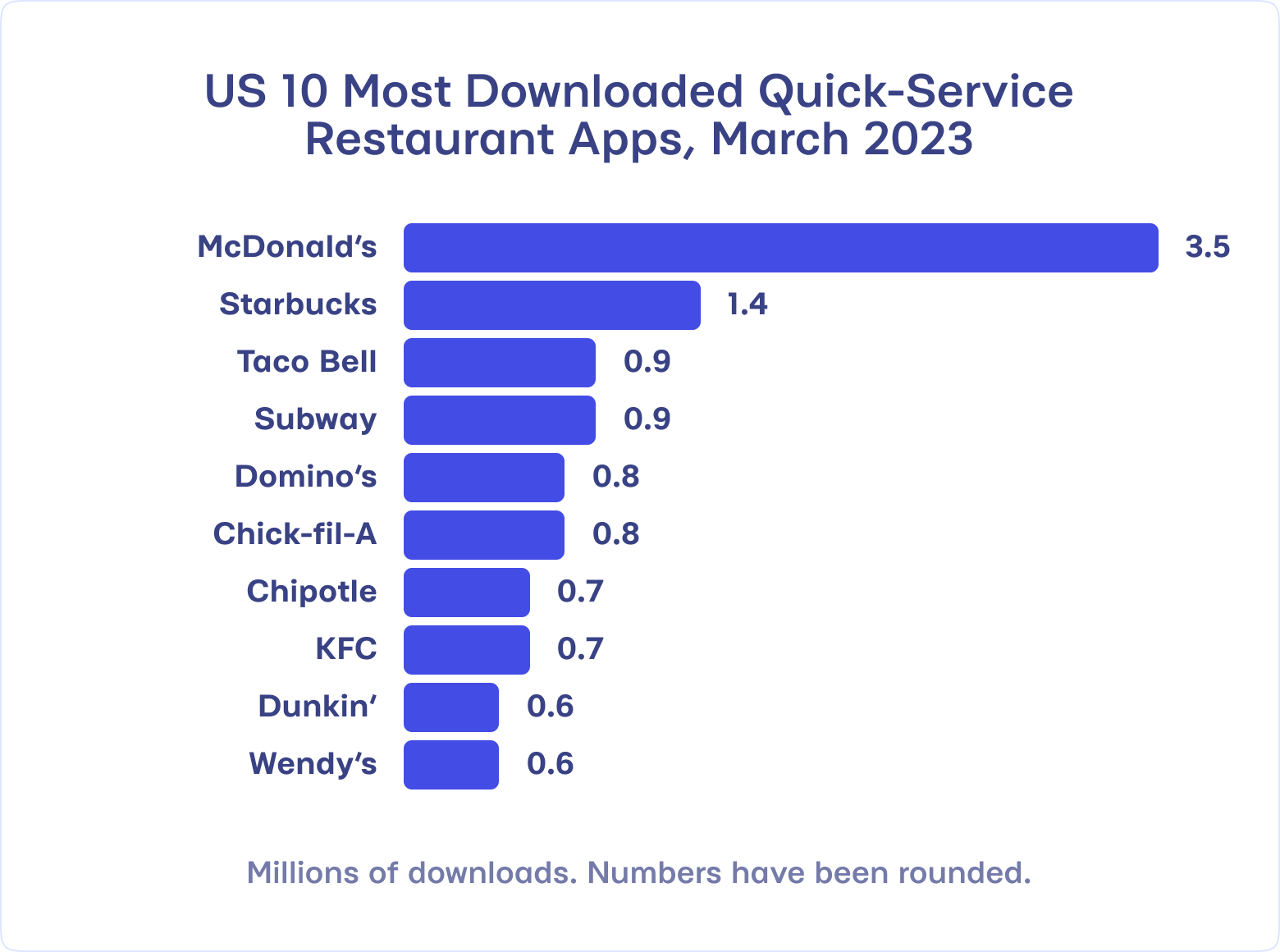
Thanks to a variety of gamification techniques, the McDonald’s app outperformed competitors in download numbers.
Social amplification and community building
Gamification is inherently a social thing. It won’t work as well as one-to-one interaction. Every McDonald’s sales promotion in the shape of gamified experiences, especially limited-time sweepstakes or tournaments, is built to be shared. Leaderboards, achievements, and badges make sense only in a social context.
This creates a layer of viral growth that’s almost impossible to replicate with traditional advertising. McDonald’s campaigns make every customer a little bit like a micro-influencer, just because they spread the brand message peer-to-peer.
Ultimately, gamified engagement becomes communal. Clearly, customers are playing with each other, not with a brand.
Lessons for Brands or How You Can Do It with Winday
If McDonald’s gamification feels like something you can hardly pull off with your brand, pause right there. With Winday, those same mechanics used by a global giant are now just a few clicks away, and no coding or dev team is needed.
Let’s take a look at how you can translate McDonald’s tactics into a plug-and-play gamified campaign for your business. It can work perfectly for any kind of business: an e-commerce shop, a growing DTC brand, or a CRM for a retail chain.
Step 1: Choose Your Game Format
Your first decision is the type of gamified experience you want to offer. Winday supports two main styles:
- Instant games: These are very fast and perfect for generating excitement around your brand promotions. What can you offer to your customers? It could be instant wins, 20% discount codes for purchasing, something adrenaline-fueled and quick.
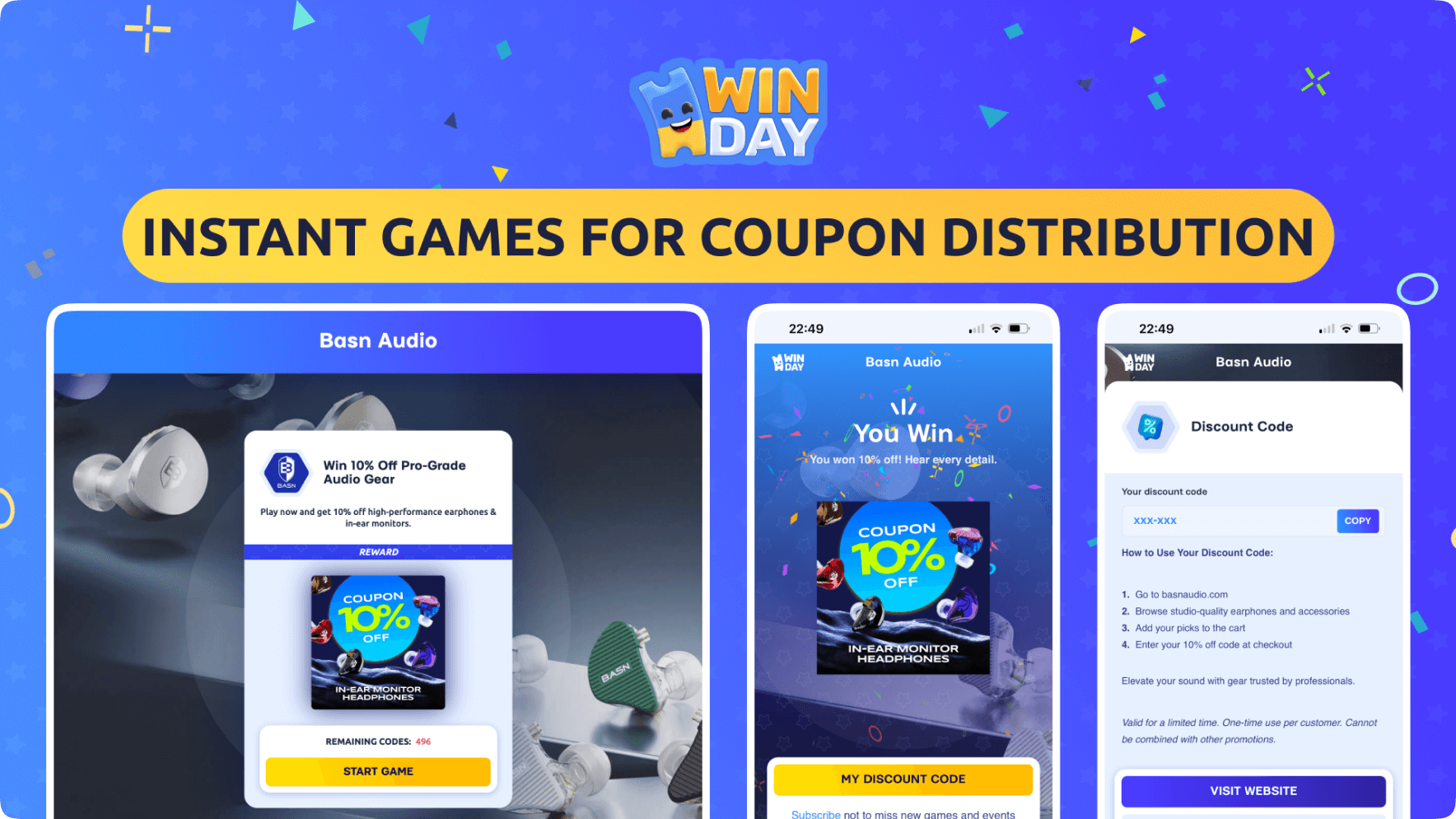
- Tournaments: These are more about repeated gaming. You can host tournaments with leaderboards. Perfect for longer campaigns or events, where users return multiple times to climb the ranks and win grand prizes. If your goal is also habitual engagement and competitiveness, look for it.
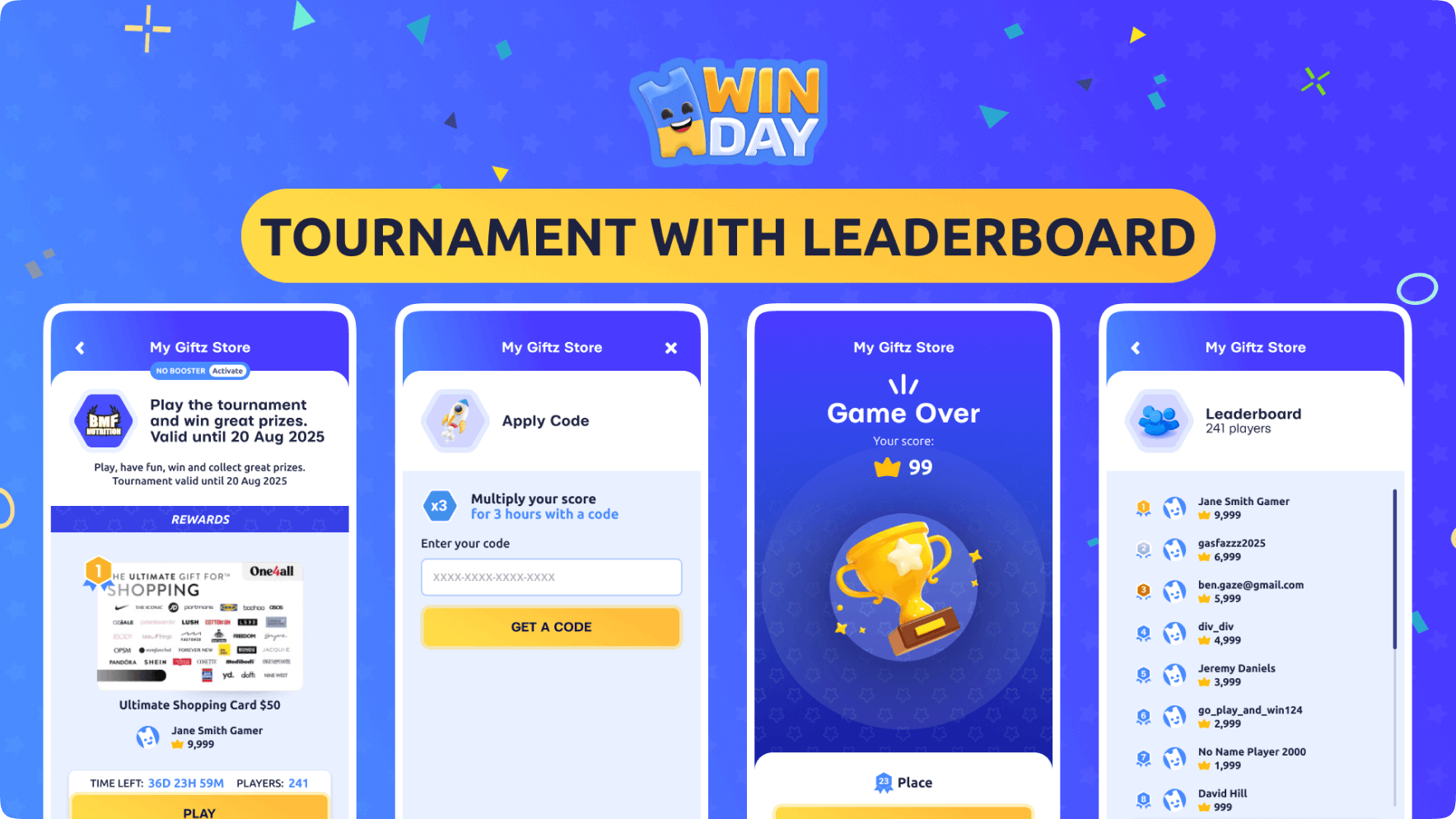
Step 2: Pick Your Game Type
Winday offers a selection of casual game mechanics that brands can quickly create and publish:
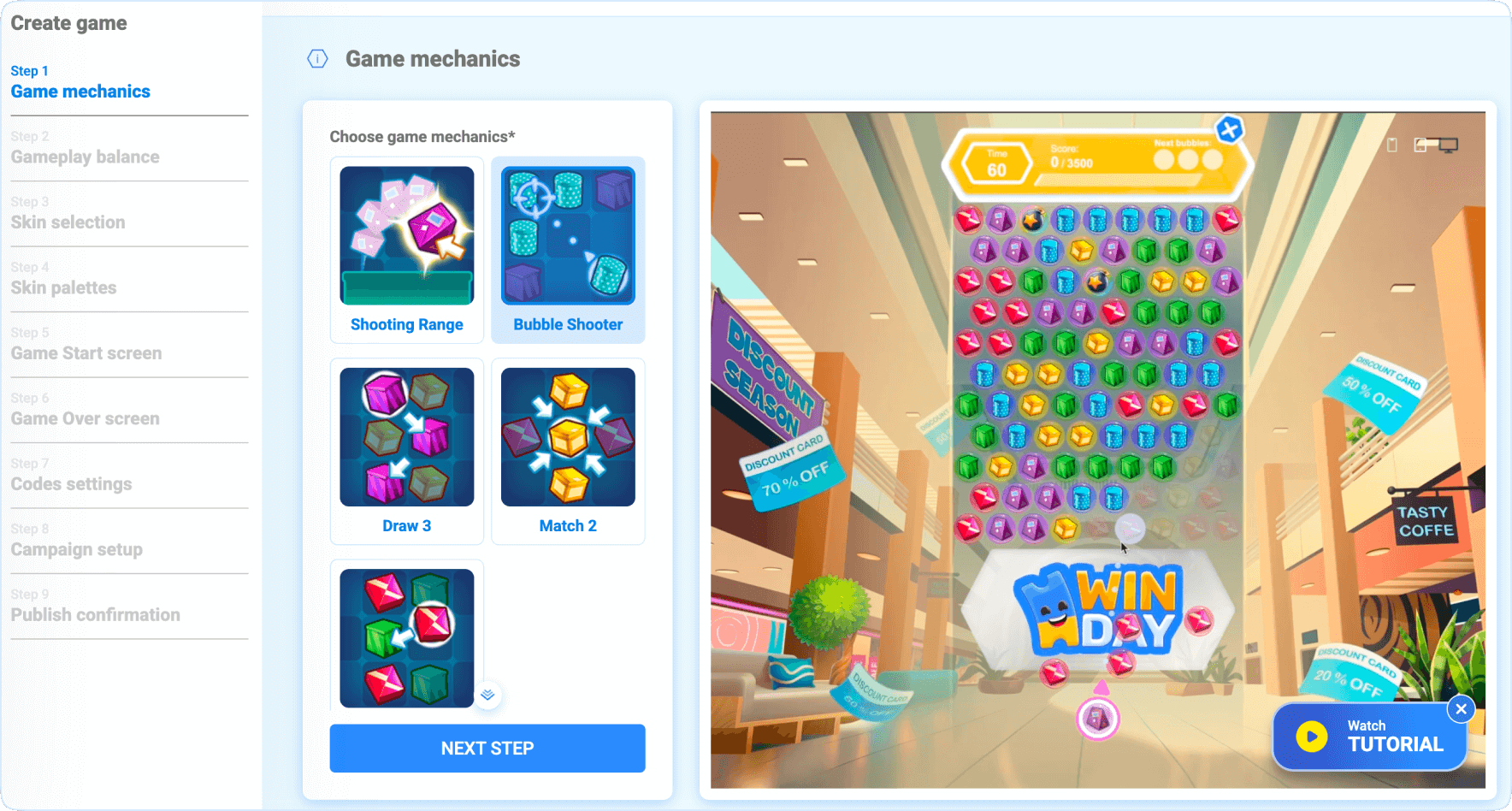
- Match 3: A well-known format for everyone, even those who were never interested in gaming. In Match 3, you can swap tiles to create combos. As you guessed from the game’s name, you have to match 3 or more tiles of the same type to earn points.
- Match 2: In this game, players have to find and match identical tiles. Players need to clear the board by connecting 2 of the same tiles.
- Draw a Line: A casual yet engaging puzzle format. Connect same-type tiles in a line to remove connections and collect points.
- Bubble Shooter: Another fast game that is fitting for promotions. Aim and shoot at bubbles of the same type. The more bubbles, the more points.
- 2D Shooter: Here, you have to shoot flying objects and get points for that.
Step 3: Set the Rules
On the next step, you have to set the rules that correspond to your marketing goal. What exactly should the game you are setting up motivate users to do? That’s your guiding question.
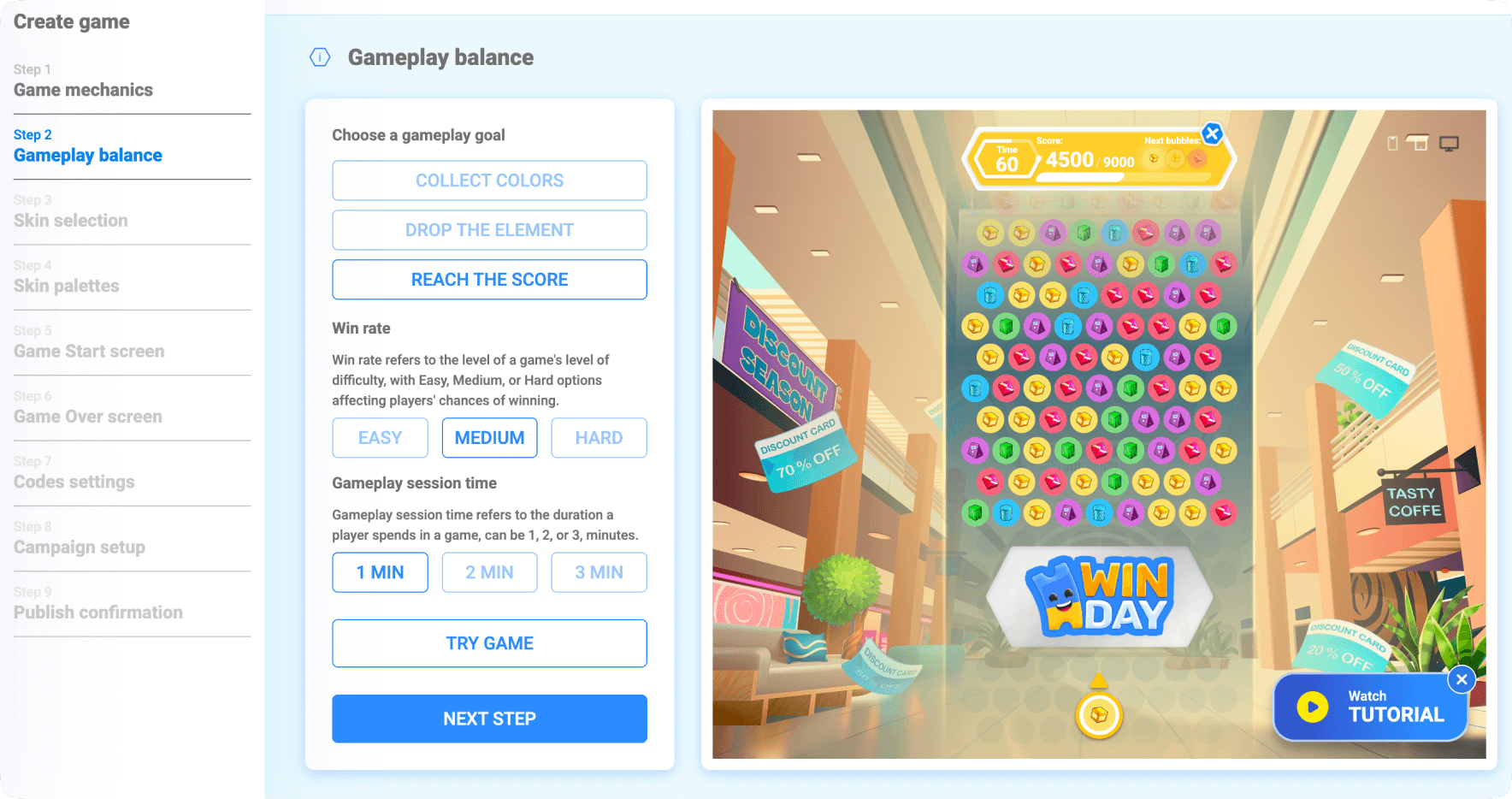
- Set difficulty levels to match your campaign goals.
- Define winning conditions, for example, earn 200 points to win a coupon or collect elements with the same color
- Add time-based limits or points boosters to add urgency.
As you can see, these micro-strategies replicate the same psychological pull used in McDonald’s spin-to-win or Monopoly game. Essentially, there is progress, challenge, and surprise.
🔝 Pro Tip:
Launch your game with a limited-time streak challenge. For example, “Run a tournament for 3 days and the winner gets the prize”. This builds habitual use and gives you quick data on who your most engaged users are.
Step 4: Brand It
Winday lets you fully customize the visual style of your game so it feels like a natural part of your brand. You can choose from a variety of ready-made templates or go a step further and request a fully custom theme.
This gives you full control over how your campaign looks and feels. And soon, you’ll even be able to generate game themes using AI.
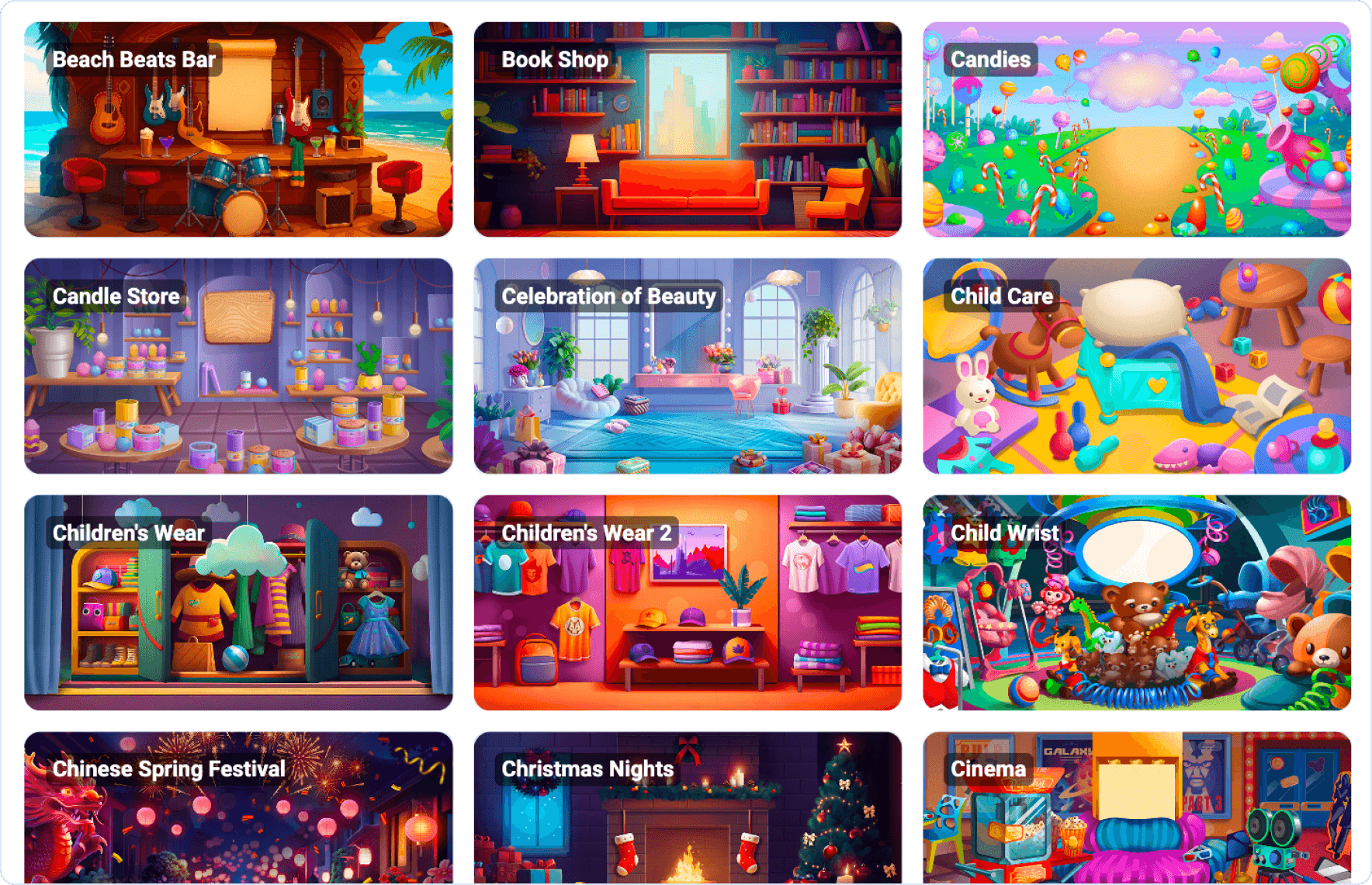
Game skin selection options on Winday.
Step 5: Publish and Promote
Once your game is ready, it’s time to launch. With Winday, publishing is flexible:
- Share via direct link in your newsletter or social media
- Turn it into a QR code for packaging or in-store signage
- Embed it on your Landing Page or Blog Post
- Push it through email or SMS to your existing customers
McDonald’s used QR codes and app pushes, and you can do the same.
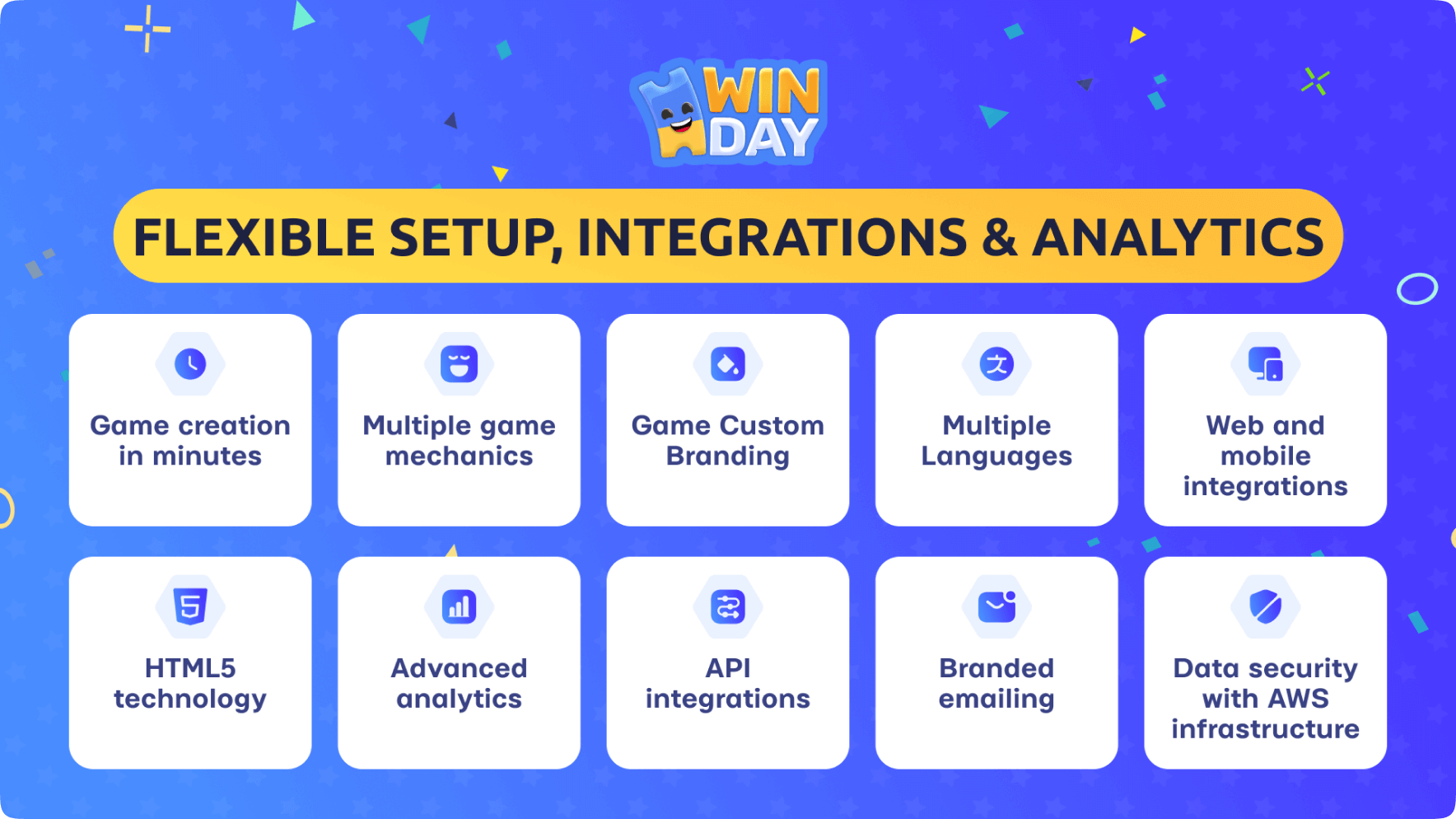
Step 6: Track Performance and Optimize
Here’s where Winday can help you create a growth engine. Every campaign comes with real-time analytics, so you can track all the most important metrics, including engagement rate, conversion rate, distribution by channel, etc. It is important to remember that not a single campaign, including McDonald’s digital marketing strategies, can bring results without analysis.
Having this data, you can make the user experience more personalized and do more A/B testing of new ideas.
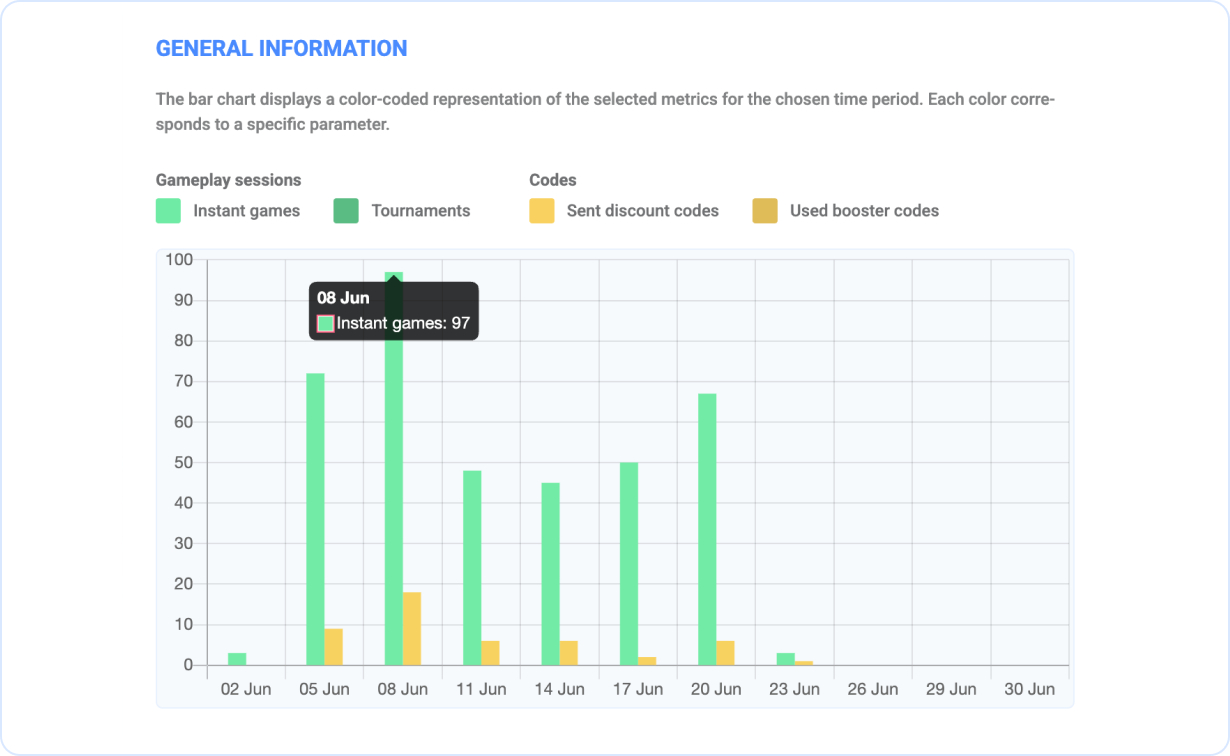
An example of analytics on Winday.
Final Takeaways
McDonald’s digital marketing is based on a gamification system. And they managed to prove that it works at the highest level. It is easy to get into the illusion that it is only possible for such big brands. However, gamification is a repeatable and scalable strategy. No matter how sophisticated McDonald’s sales promotion looked, now, those same mechanics are within reach of any brand, thanks to Winday.
You don’t need an in-house tech team or a seven-figure budget. You need a clear goal, a few creative ideas, and Winday to bring it to life.
Try all Winday features FOR FREE. No credit card required! Launch your first gamified loyalty or promotional campaign today.
Rate this article
Keep Learning
How to Improve Customer Retention: Traditional Strategies and Gamification Approach
Every business seeks a way to make customers come back. What traditional retention strategies are there, and how can gamified tools like Winday games help? In this article, we break it all down.
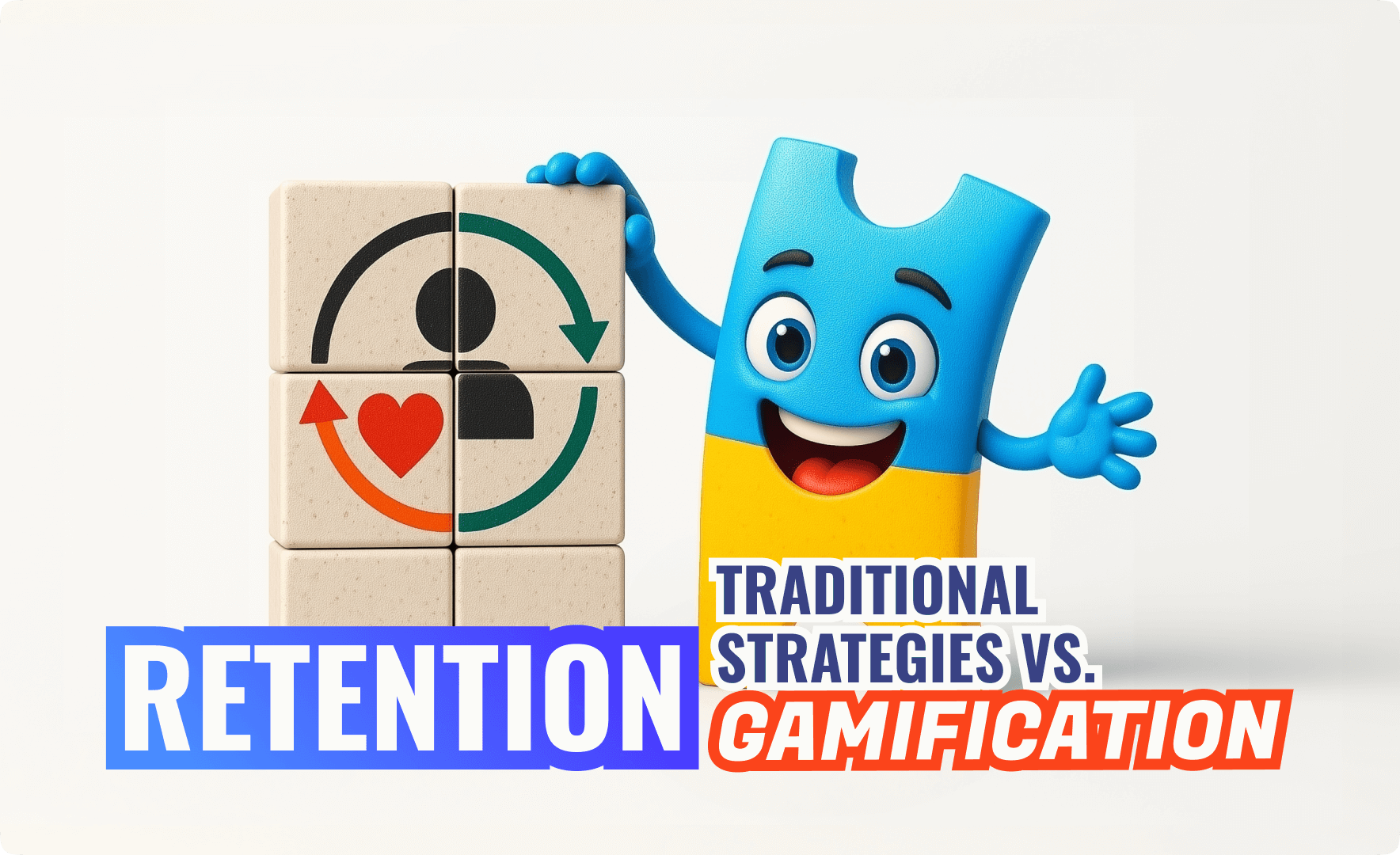
Using Gamification to Boost Customer Loyalty
Learn how gamification impacts customer loyalty, what gamified approaches work well for businesses, and how to boost your customer loyalty with Winday’s tournaments and gamification techniques.

Sales Promotion Ideas and How to Enhance Them with Gamification
Selling today is part art, part smart tactics. Check out classic promotional ideas that still work and are used widely, and see how adding gamification can turn them into real crowd-pullers.
